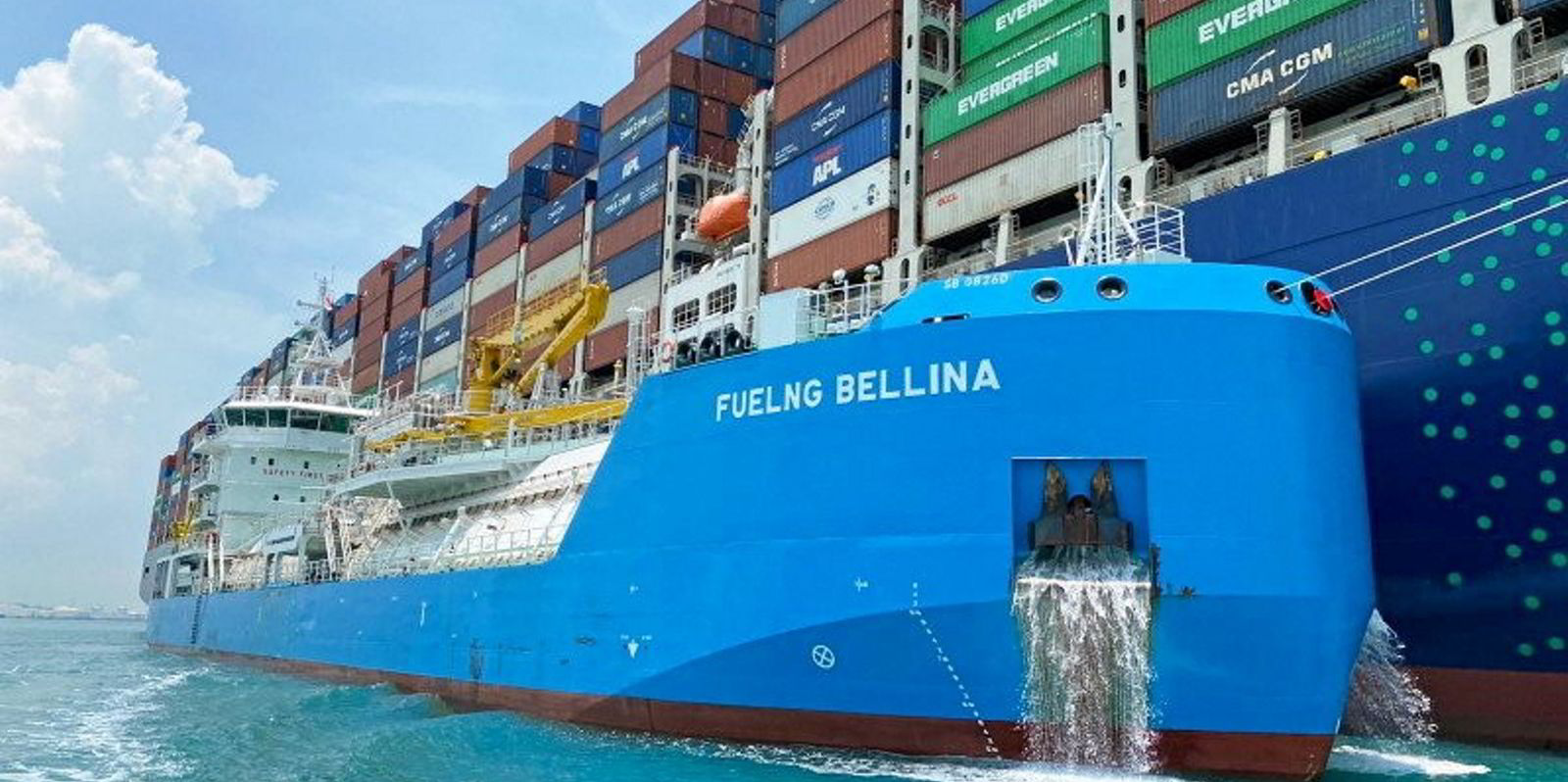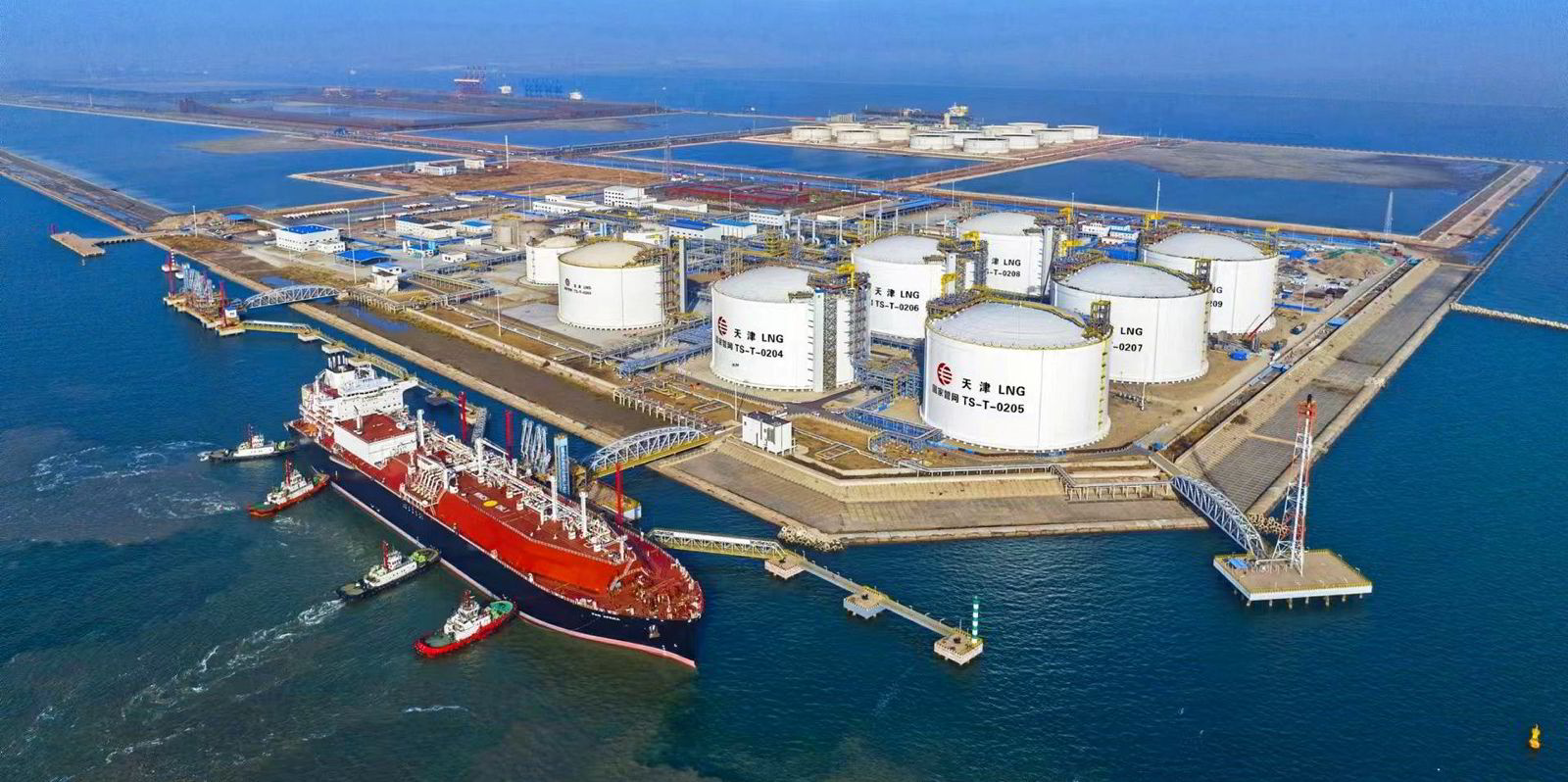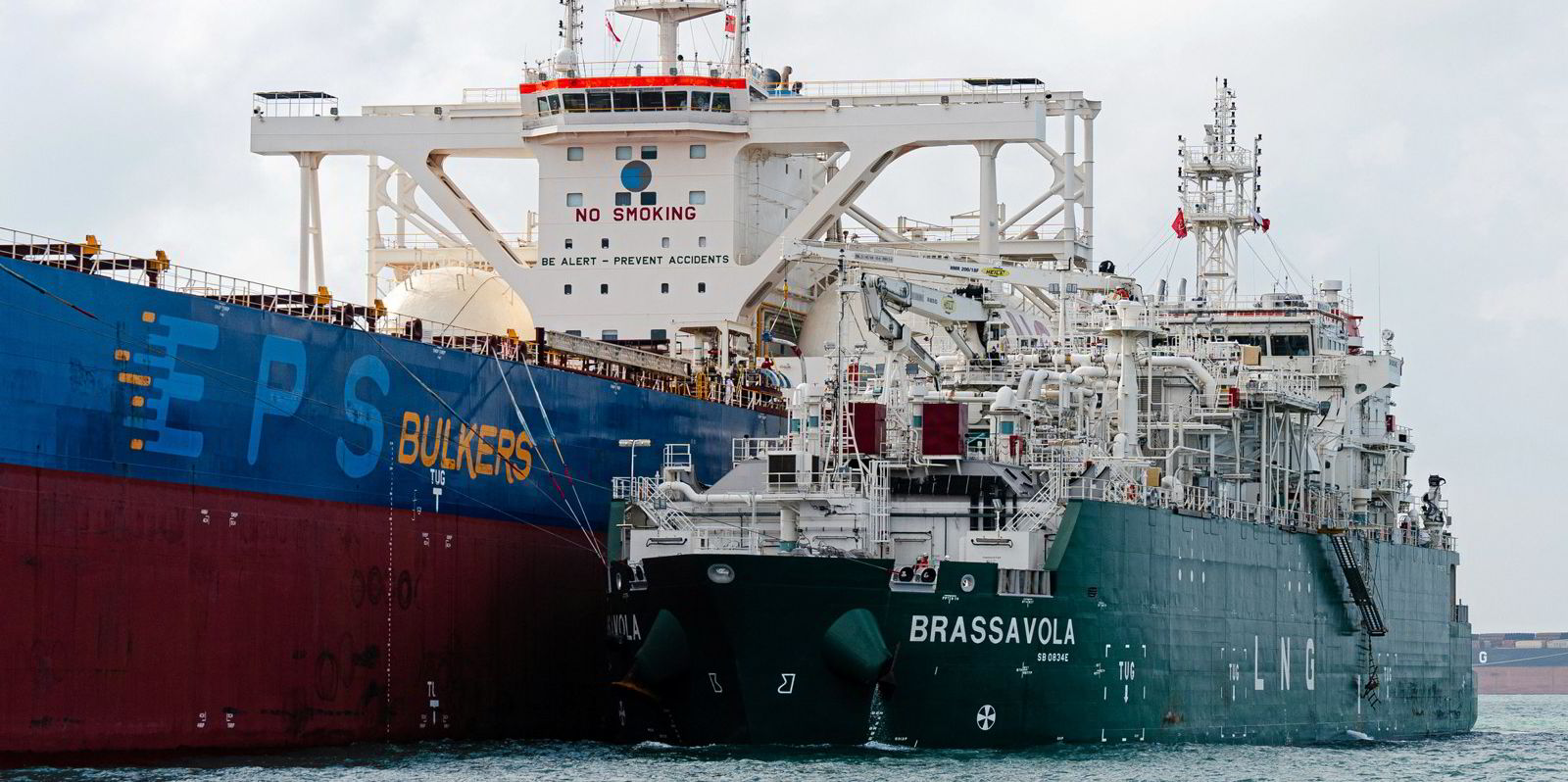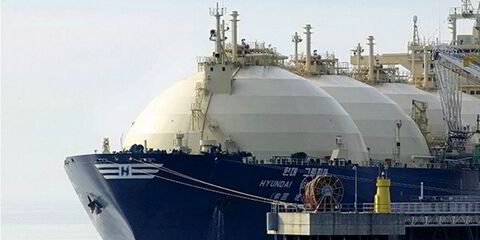Energy major Shell is backing LNG as a marine fuel and a product it plans to invest in to meet its emissions reduction targets.
In its Energy Transition Strategy 2024, Shell said about 5% of shipping in operation on a gross tonnage basis is fuelled by LNG, which can reduce emissions by up to 23% compared with conventional fuels.
Of the new ships on order, about 25% of gross tonnage is being designed for LNG.
“We believe demand for LNG in shipping will grow, including for liquefied biomethane,” Shell said.
“Fuels such as methanol and ammonia could be options for shipping in the long term, but we see challenges with both of them.”
Shell claimed it has developed “the world’s largest LNG fuelling network of ports and bunker vessels on key trading routes” which, it said, enables shipping customers to choose LNG.
The report also detailed how the company is researching the development of fuels such as liquefied synthetic gas, produced when renewable hydrogen is combined with CO2 to create natural gas.
Shell stressed that to deliver the full greenhouse gas benefits of LNG methane emissions must be minimised and reminded that it has set a target to achieve near-zero methane emissions by 2030 across its operations.
“Through our more efficient new plants, and projects to reduce methane emissions from existing assets and our shipping fleet, we aim to deliver LNG with some of the lowest methane emissions in our industry,” the company said.
But in 2023, Shell said its total methane emissions rose to 41,000 tonnes compared with 40,000 tonnes in 2022.
It said the increase was due to venting in connection with the maintenance of its Prelude FLNG asset off Australia, operational issues for Malaysian assets and an increase in reported emissions from its integrated gas assets in Canada.
Shell, which has a target to become a net-zero emissions energy business by 2050, said it will reduce emissions from its own operations, change the mix of the energy products it sells and grow new carbon removal and abatement businesses.
The energy giant expects global growth in oil demand to slow this decade and start declining in the 10 years from 2030.
In contrast, it expects global demand for LNG to continue growing “at least through the 2030s”.
Carbon capture
The company detailed that its estimated share of its energy sales of LNG will rise to around 26% by 2030 from 22% in 2023 while that for oil products will fall from 48% to 39% in the same period.
Shell said it plans to grow its LNG business by 20% to 30% by 2030 compared with 2022. But it is aiming to cut the carbon intensity of this business.
The company said it is developing new projects with lower carbon intensity by using renewable power and carbon capture and storage.
Shell said it will also continue to expand its portfolio by buying LNG from others.
“Our LNG business will remain a key priority for Shell, meeting continued strong demand, especially in Asia where we send most of our shipments today,” the major said.
Shell said that by the end of 2023, it had achieved more than 60% of its target to halve emissions from the company’s operations by 2030, compared with 2016.
Power focus
The major said it also reduced the net carbon intensity of the energy products it sells by 6.3% compared with 2016.
But Shell also said it plans to build up its power business and has withdrawn from the supply of energy directly to homes in Europe.
It said this shift will result in lower total growth of power sales to 2030, and a downward revision of the reduction in net carbon intensity target of the energy products it sells to 15% to 20% by 2030 compared with 2016, against our previous target of 20%.
Shell said it is investing $10bn to 15bn between 2023 and the end of 2025 in low-carbon energy solutions. In 2023, it invested $5.6bn in them which it said was more than 23% of its total capital spending.
Chief executive Wael Sawan said: “By providing the different kinds of energy the world needs, we believe we are the investment case and the partner of choice through the energy transition.”







